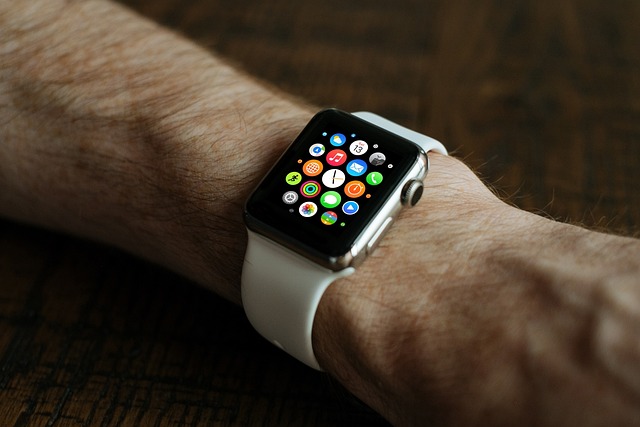If your Apple Watch is experiencing more frequent charging needs, diminished battery life compared to its original performance, or glitches and system resets due to low power, it may be time to replace the battery. As batteries naturally degrade over time, this can affect not only the device's convenience but also its health monitoring precision and display brightness. A weakened battery can lead to inaccuracies in health data, and if your watch frequently shuts down or resets without warning, it's a clear sign that the battery requires attention. Regularly checking your Apple Watch's battery status is crucial for maintaining its optimal performance and ensuring continuous reliable service. For accurate health metrics, maintaining a fully charged battery is essential, as degradation can significantly impact sensor functionality and data integrity. To avoid potential issues, consider replacing the battery at professional repair services that specialize in Apple products, using genuine Apple parts to guarantee the best performance and longevity. After replacement, recalibrate your watch by charging it overnight while worn on your wrist to ensure it operates efficiently according to your usage patterns. Timely battery replacements are key to preserving the performance and longevity of your Apple Watch, making it a dependable accessory for years to come.
When your Apple Watch feels less like a companion and more like a fickle accessory, it might be time to consider replacing its battery. A deteriorating battery can lead to a cascade of issues, from consistently needing recharges to compromising the accuracy of health metrics. Here, we’ll explore three definitive signs that indicate your device is ready for a new battery, and guide you through the steps to replace an Apple Watch battery effectively. Understanding these indicators is crucial for maintaining your watch’s performance and ensuring it remains a reliable tool for health and wellness monitoring.
- Recognizing the Need for a New Apple Watch Battery: Understanding Your Device's Performance Indicators
- Persistent Charging Patterns: When Constant Recharging Signals Battery Replacement
- Diminished Display Brightness: How Fading Screen Luminosity Points to Battery Issues
- Unreliable Health Metrics: The Impact of a Deteriorating Battery on Apple Watch Tracking
- Strange Shutdowns and Resets: Diagnosing Unexpected Power Loss as a Battery Malfunction Indicator
- Apple Watch Battery Replacement: A Step-by-Step Guide to Prolonging Your Device's Lifespan
Recognizing the Need for a New Apple Watch Battery: Understanding Your Device's Performance Indicators

When your Apple Watch begins to exhibit signs of diminished power efficiency, it may be time to consider replacing the battery. The performance indicators of an Apple Watch are designed to alert users to potential battery issues. One clear sign is if your watch consistently drains faster than usual between charges. This can happen over time as batteries naturally degrade. Another indicator is the longevity of the charge; if you find that your device no longer holds a charge for the full duration it used to, this is often a precursor to battery replacement needs. Additionally, glitches or system resets triggered by low power levels can point to a compromised battery. These issues are not just inconvenient but can also affect the accuracy of the health metrics your Apple Watch tracks. To ensure optimal performance and reliability, and to maintain the precision of its health monitoring features, it’s advisable to replace the Apple Watch battery when these signs become evident. Regularly checking your device’s battery status through the settings app can help you stay ahead of these issues, allowing for a timely replacement before more serious problems arise.
Persistent Charging Patterns: When Constant Recharging Signals Battery Replacement

If you find yourself frequently tethered to your charger, it might be time to consider replacing your Apple Watch battery. Persistent charging patterns that were not characteristic of your device’s initial performance can be a clear indication that the battery is degraded and needs attention. Over time, lithium-ion batteries naturally lose their ability to hold a charge as effectively as when new. This can manifest as a watch that no longer maintains its charge for the expected duration between plug-ins. It’s not uncommon for users to notice their Apple Watch dying more quickly than before, or requiring a charge midday, which is significantly less convenient compared to the initial battery life. If you’re experiencing these symptoms, it’s likely that your Apple Watch’s battery capacity has diminished and a replacement is advisable. Not only does this affect the usability of your device, but it can also impact the health of your Apple Watch over time if left unaddressed. Regular battery checks and timely replacements are key to maintaining the performance and longevity of your smartwatch.
Diminished Display Brightness: How Fading Screen Luminosity Points to Battery Issues

If you’ve noticed that your Apple Watch’s display isn’t as bright as it used to be, this could be an indication that it’s time to consider replacing the battery. The screen luminosity on an Apple Watch is a direct reflection of its battery health; as the battery capacity wanes, so does the display’s ability to emit light effectively. This can make the interface less readable, especially in well-lit environments or under direct sunlight. Diminished brightness isn’t just about convenience—it can affect the user experience significantly by making it harder to view notifications or monitor your health metrics. If you find that you frequently need to adjust the brightness settings to a higher level than usual to see your screen clearly, or if the display appears noticeably dimmer compared to other Apple Watches, this could be a sign that the battery is degraded and may require replacement. Regularly replacing an Apple Watch battery can ensure optimal performance and extend the lifespan of your device, so it’s advisable to address this issue promptly.
Unreliable Health Metrics: The Impact of a Deteriorating Battery on Apple Watch Tracking

When the battery in your Apple Watch begins to degrade, it can significantly affect the accuracy and reliability of health metrics that are crucial for monitoring your well-being. A diminishing battery capacity may lead to inconsistent data readings, which can be particularly problematic for tracking activities like heart rate, sleep patterns, and workout performance. As the charge level drops below a certain threshold, the sensors and software that analyze this data may not function optimally. This can result in fluctuations in the data collected, potentially skewing health insights and making it harder to discern meaningful trends over time. For instance, an unreliable battery might cause your Apple Watch to miss peak heart rate measurements during exercise or misinterpret deep sleep stages at night. These inaccuracies underscore the importance of replacing an aging battery to maintain the integrity of health-related data. Regularly calibrating your Apple Watch and monitoring its performance can help identify when it’s time to consider a battery replacement, ensuring that you continue to receive accurate and reliable health metrics for better informed decision-making regarding your health and fitness regimen.
Strange Shutdowns and Resets: Diagnosing Unexpected Power Loss as a Battery Malfunction Indicator

When your Apple Watch experiences frequent and unprompted shutdowns or resets, it may be a clear indication that it’s time to consider replacing its battery. These incidents can occur when the watch’s battery capacity diminishes below a certain threshold, leading to an inability to maintain power during normal operation. Unlike the expected behavior of the device, where a low-battery warning alerts you before shutting down, unexplained power loss is a red flag that points directly to potential battery malfunction. It’s crucial to distinguish between these occurrences and other potential issues, such as software glitches or app conflicts, which might also cause the device to reset unexpectedly. If you notice that your Apple Watch is not holding a charge as it used to, or if it’s frequently restarting on its own, the battery may have degraded to the point where replacement is the most viable solution to restore full functionality. Regular use and natural wear over time can affect battery performance, and proactive replacement of the battery can prevent more significant failures and ensure your Apple Watch remains reliable and responsive.
Apple Watch Battery Replacement: A Step-by-Step Guide to Prolonging Your Device's Lifespan

When your Apple Watch’s battery performance begins to wane, it may be time to consider replacing the battery to prolong your device’s lifespan. Typically, an Apple Watch battery can last for up to 18 hours under regular usage conditions. However, over time, the battery’s capacity can diminish, leading to shorter operational times between charges. If you notice that your Apple Watch is no longer holding a charge as it once did, or if it requires frequent recharging, these could be signs that it’s time to replace the battery.
Replacing an Apple Watch battery is a task best performed by professionals, especially since unauthorized repairs may void the warranty and potentially cause further damage to the device. If you decide to proceed with the replacement, ensure that you utilize genuine Apple parts for the best performance and longevity. The process involves securing the Apple Watch in a specialized holder, carefully removing the back casing, disconnecting the battery connector, and then safely removing and disposing of the old battery. Subsequently, the new battery is installed, reconnected, and the device is tested to ensure proper function before the casing is reassembled. Post-replacement, it’s advisable to recalibrate your Apple Watch by wearing it overnight while it charges to help it learn your usage pattern and optimize its power management. Regular maintenance and timely battery replacement can significantly enhance the performance and longevity of your Apple Watch, ensuring that it remains a reliable companion for years to come.
When your Apple Watch begins to exhibit signs like persistent charging demands, a noticeably dim screen, or unexpected shutdowns and resets, it may be time to consider replacing the battery. These symptoms can hinder its performance and affect the accuracy of health metrics you rely on. It’s crucial to address these issues promptly to ensure your device remains a reliable companion. If you find that your Apple Watch is no longer holding a charge as it once did, or if its display brightness has faded, these are clear indicators that a battery replacement might be in order. Following the guidance provided for replacing an Apple Watch battery can help restore its functionality and extend its useful life. Remember to take action when you notice these signs, as timely maintenance can make a significant difference in maintaining your Apple Watch’s optimal operation.
